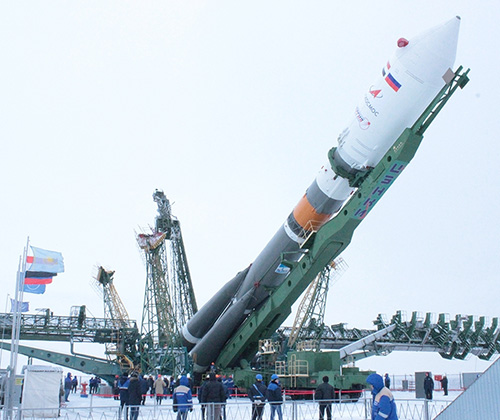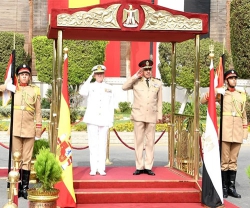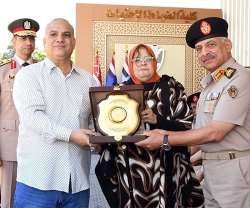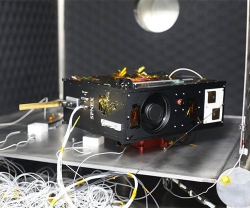ORPE Teсhnologiya named after A.G. Romashin, part of Rostec State Corporation, has manufactured the frameless body of the Egyptian EgyptSat-A spacecraft.
The Obninsk enterprise’s technology is involved in manufacturing a frameless satellite body. The design features of the body allow it to accommodate thermal control panels with built-in power elements, increasing the space inside the satellite, which can be used to accommodate additional equipment. The weight of a spacecraft with a body of this type is 15% less than its frame analogs, and assembly with the required accuracy can be done in less than an hour.
“Frameless satellite manufacturing technology is the enterprise’s own technical solution, implemented in cooperation with partner TAIS. It allows you to minimize labor costs and reduce assembly time, as the design and creation of the finished product takes less than three months from the receipt of the specs. Previously, the assembly process alone could take up to six months. This is a significant advantage in the implementation of large-scale projects to create orbital satellite groupings,” said Andrei Silkin, ORPE Technologiya General Director.
The EgyptSat-A satellite was manufactured for the Egyptian National Agency for Remote Sensing of the Earth. It is equipped with modern optical electronics with high spatial resolution. The spacecraft can film in the visible and infrared spectra in the panchromatic (black and white) and multispectral ranges. The satellite has an improved optical-electronic system and an on-board control complex, a high-speed on-board radio link and modernized solar panels. The mass of the device is about one ton. The lifetime of the satellite in orbit is 11 years.
“Rostec and its Egyptian partners have long-standing and mutually beneficial relations in various fields. We welcome the achievements of Egypt in space exploration,” said Viktor Kladov, Director for International Cooperation and Regional Policy.
“Rostec has a wide range of competencies and extensive experience in the development of the space industry, and we are open to expanding and strengthening collaboration in this area,” he added.
On 21 February 2019, Egypt launched EgyptSat-A spacecraft from Kazakhstan’s ‘Baikonur Cosmodrome’ space port (photo), according to the state’s National television.
Egypt’s third Earth observation satellite (EgyptSat-A) was launched with Soyuz-2-1b/Fregat rocket following the EgyptSat 1 spacecraft launched in 2007 and EgyptSat 2 launched in 2014.
According to statement issued by the Cabinet’s Information Center, the satellite’s 11-year mission will be replacing EgyptSat 2 Earth-imaging satellite, which failed in orbit in 2015.
The satellite, which costed approximately $100 million, weighs more than a ton fully fueled. EgyptSat-A was announced to feature several improvements over the EgyptSat 2 design, including improved solar batteries and a high-speed radio link with ground stations.
Compared to EgyptSat-2, EgyptSat-A incorporates modernized electrical and flight control systems, an improved imaging payload, a higher-throughput communications system and more efficient solar arrays. EgyptSat-A will also benefit from a more powerful carrier rocket, allowing it to be placed into a sun-synchronous orbit more suited to Earth imaging than the lower-inclination orbit in which EgyptSat-2 operated.
The EgyptSat-A Earth’s remote sensing satellite was developed by the Russian Energia Space Rocket Corporation along with Egypt’s National Authority for Remote Sensing and Space Sciences (NARSS).
The Launching process was witnessed by high-level Egyptian delegation.





















